State Farm Rate Hike Battle: Consumers vs. Insurer
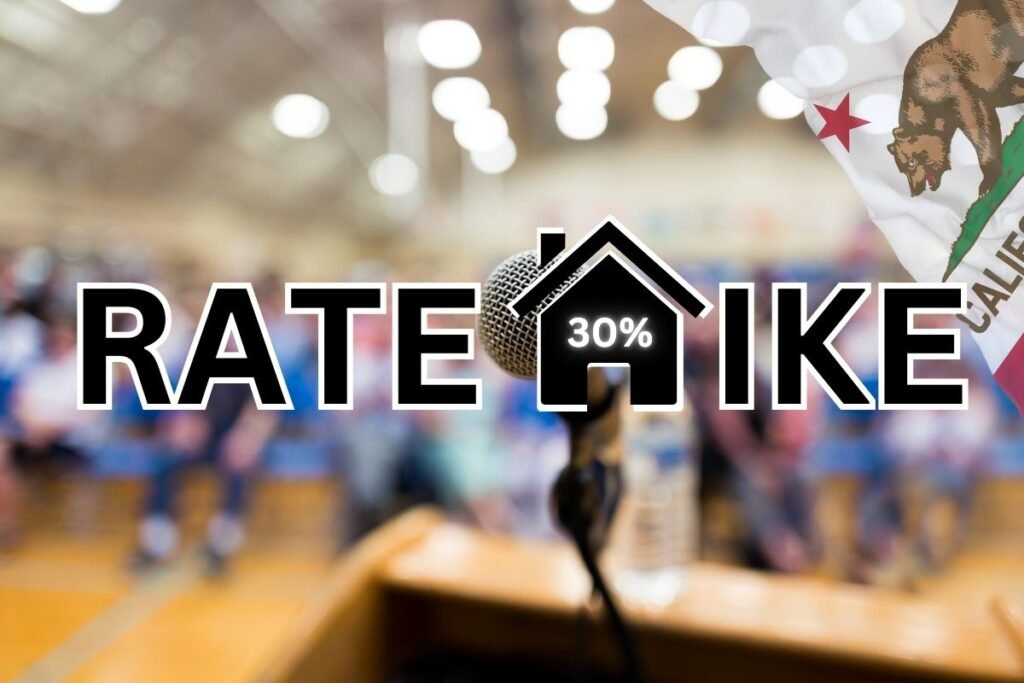
March 13, 2025 | JacobiJournal.com — As California Insurance Commissioner Ricardo Lara prepares to rule on State Farm General’s request for emergency rate hikes, both the insurer and a consumer advocacy group are making their cases. The executives and representatives from Consumer Watchdog have sent letters to Commissioner Lara, arguing their opposing positions. State Farm Pushes for Emergency Rate Increases Reports suggest Commissioner Lara may seek a solution that requires State Farm Mutual Automobile Insurance Company, the parent company of State Farm General, to provide more financial support to its struggling California subsidiary. While not confirmed, State Farm executives responded in a March 11 letter, expressing concern about such a move. Reiterating remarks from a Feb. 26 hearing, the letter emphasized that State Farm Mutual’s independent board members must prioritize the company’s overall financial health. Executives argued that without emergency rate approvals and market reforms, injecting capital into State Farm General would be unwise. Commissioner Lara directly asked whether granting the emergency rate increase would improve the chances of parent company support. The general CEO Dan Krause confirmed it would signal a more sustainable market, making financial assistance more viable. Consumer Watchdog Calls for Parental Support Consumer Watchdog, a group advocating for policyholders, has repeatedly suggested that State Farm Mutual should provide greater financial backing for its California subsidiary. The group highlighted how it supported its Texas affiliate after catastrophe losses and questioned why California homeowners are being treated differently. State Farm countered by stating that Texas’ regulatory environment allowed the repayment of financial assistance, whereas California’s market conditions make recovery uncertain. The company dismissed claims that its reinsurance agreements are unfair, arguing that they have provided critical financial stability amid wildfire risks. Consumer Watchdog also criticized State Farm General for allegedly prioritizing parent company profits over California policyholders. The group cited a $3 billion difference between reinsurance premiums paid and recoveries received from 2015 to 2024, as well as a $1 billion wildfire subrogation payout to State Farm Mutual. However, State Farm defended these transactions, stating that reinsurance operates similarly to homeowner insurance—paying premiums does not guarantee immediate payouts but ensures protection against catastrophic losses. Hidden Camera Video Raises New Questions Adding to the controversy, Consumer Watchdog referenced an undercover video featuring former executive Haden Kirkpatrick. In the video, Kirkpatrick suggested that policy cancellations are used as a negotiation tactic to pressure regulators into approving rate increases. Consumer Watchdog argued that this contradicts State Farm’s public claims that rate relief would ensure their continued presence in California. State Farm dismissed Kirkpatrick’s comments as unofficial and irrelevant, noting that he was never involved in California operations or rate-setting decisions. The company reaffirmed that its actions and communications with regulators have been transparent and grounded in economic realities. What’s Next for California Homeowners? Commissioner Lara’s decision will have significant implications for homeowners and the broader insurance market. If it receives approval for rate hikes, it may continue offering coverage in the state. If denied, further policy cancellations could follow, worsening California’s already fragile insurance landscape. Source: U.S. Attorney for the District of Maryland FAQs: State Farm Rate Hike Battle What is the rate hike battle in California? The rate hike battle refers to the dispute between State Farm and consumer advocates over emergency insurance rate increases requested in 2025. Why is Consumer Watchdog opposing the battle? Consumer Watchdog argues that State Farm’s parent company should provide more financial support to its California subsidiary instead of burdening homeowners with higher rates. How could Commissioner Lara’s decision affect the rate hike battle? Commissioner Lara’s ruling will determine if it can continue writing policies in California or if denials lead to further policy cancellations. What role did the undercover video play in the rate hike battle? Consumer Watchdog cited a hidden camera video of a former executive claiming policy cancellations were used to pressure regulators, adding controversy to the debate. For more updates on California’s insurance market, visit JacobiJournal.com. Read more about insurance industry trends and regulatory battles. Read More from JacobiJournal.com
Insurer Payouts for LA Wildfires Surpass $12B, Report Reveals

March 12, 2025 | JacobiJournal.com — Wildfire insurance payouts have surged as insurers cover more than $12 billion in damages from the devastating Los Angeles wildfires in January, according to updated figures from California Insurance Commissioner Ricardo Lara. The fires, primarily the Eaton and Palisades wildfires, destroyed tens of thousands of homes and forced mass evacuations. The latest figures, released through California’s public consumer claims tracking system, nearly double the $6.9 billion reported last month. The bulk of outstanding claims include property damage and debris removal, which will be paid out as homeowners begin the rebuilding process. Latest Fire Insurance Claims Data According to the California Department of Insurance (CDI): Early estimates put insured losses at $8 billion for the Eaton and Palisades wildfires alone, while total damages from all five major fires that burned simultaneously in the region could reach up to $40 billion. Major Insurers Facing Billions in Losses Lloyd’s of London recently announced expected losses of $2.3 billion, adding to a growing list of companies with billion-dollar claims from the catastrophe. Munich Re reported in February that it anticipates €1.2 billion ($1.26 billion) in wildfire-related claims. Other major insurers facing significant losses include: Ongoing Financial Impact & Recovery Efforts Insurer Payouts for LA Wildfires: With thousands of claims still pending and reconstruction efforts underway, insurers are bracing for additional payouts in the months ahead. The fires, fueled by hurricane-force winds, left extensive devastation across multiple counties, marking one of the costliest wildfire events in U.S. history. For updated wildfire claims and recovery resources, see the California Department of Insurance official wildfire recovery page. FAQs: LA Wildfire Insurance How much has been paid out so far in the wildfire insurance claims? As of March 2025, insurance companies have paid more than $12 billion in LA wildfire insurance claims, nearly doubling last month’s reported figures. Which insurers face the largest insurance losses? Major insurers include Lloyd’s of London, State Farm, Travelers, Allstate, Chubb, Munich Re, and Zurich, all reporting billion-dollar LA wildfire insurance impacts. What types of damages are covered under payouts? Claims include home and business property losses, living expenses, debris removal, and other disaster-related damages linked to the January wildfires. Why are insurance payouts still increasing months later? Thousands of claims remain under review, and reconstruction efforts are ongoing, meaning insurers are bracing for further payouts as recovery progresses. How are wildfire insurance payouts helping recovery efforts? Wildfire insurance payouts are providing critical funds for homeowners to rebuild, cover temporary living expenses, and clear debris, ensuring communities can begin long-term recovery after the January fires. What role does the California Insurance Commissioner play in wildfire insurance claims? The California Insurance Commissioner oversees wildfire insurance claims data, ensures companies meet payout obligations, and monitors the financial stability of insurers handling billions in losses. Stay informed on wildfire recovery, fraud cases, and insurance market updates like this LA wildfire insurance story. Subscribe today at JacobiJournal.com for trusted news and expert analysis. Read More from JacobiJournal.com
Lloyd’s Faces $2.3B Hit from Los Angeles Wildfires

March 12, 2025 | JacobiJournal.com — Lloyd’s Faces $2.3B Hit: Lloyd’s of London has announced an estimated loss of $2.3 billion from the devastating Los Angeles wildfire in January. The disaster has left a lasting financial and social impact, forcing insurers and reinsurers to confront the realities of catastrophic climate-driven events. This single blaze, part of a series of destructive fires across the region, has already generated $6.9 billion in claims, making it one of the most expensive natural disasters in recent history. The Los Angeles wildfire continues to serve as a warning to the global insurance industry, showing how quickly a regional event can translate into multibillion-dollar losses. For Lloyd’s and other major players, the scale of destruction underscores the urgency of reassessing risk models and adapting premium structures to remain financially resilient. Analysts warn that as wildfire frequency and intensity grow, insurers may need to balance their books by increasing costs for policyholders while also investing in strategies that mitigate future wildfire exposure. Lloyd’s Reports Major Wildfire Losses Amid Rising Premiums Lloyd’s Faces $2.3B Hit: In a preliminary disclosure of its 2024 financial results, Lloyd’s confirmed the wildfire losses while also reporting a 6.5% increase in gross written premiums, reaching £55.5 billion ($71.8 billion). The full financial results are set to be released on March 20. “Based on current data, we estimate the net loss to the market for the Californian wildfires to be approximately $2.3 billion,” Lloyd’s stated in its announcement. Widespread Impact on Global Insurers Several major insurance providers have disclosed substantial losses due to the Los Angeles wildfires: The Fires’ Devastating Toll The wildfires ravaged thousands of properties, with the Eaton and Palisades fires being the most destructive. At their peak, five major fires, fueled by hurricane-force winds, swept across the Los Angeles region. What’s Next for Insurers? As climate-related disasters become more frequent and severe, insurers must reassess risk models and premium structures to stay resilient. Lloyd’s, Munich Re, and other major players continue adjusting strategies to mitigate financial exposure to catastrophic events. Source: Lloyd’s of London FAQs: Lloyd’s Los Angeles Wildfire Losses What caused the Los Angeles wildfire in January? The Los Angeles wildfire was fueled by hurricane-force winds and dry conditions, which rapidly spread multiple fires across the region, destroying thousands of properties. What are the Los Angeles wildfire losses in 2025? Lloyd’s reported an estimated $2.3 billion in Los Angeles wildfire losses, one of the largest insurer hits from the January disaster. Which other insurers reported wildfire losses besides Lloyd’s? Munich Re, Travelers, Chubb, State Farm, Allstate, Swiss Re, and Zurich all disclosed significant Los Angeles wildfire losses. How will the wildfire losses affect premiums? Experts expect Lloyd’s and other insurers to adjust premiums and risk models to reflect the severity and frequency of California wildfires. Why are the wildfire losses significant for the industry? They highlight the growing impact of climate-related disasters on global insurers, pushing companies to rethink financial resilience strategies. Stay informed on financial crime, insurance fraud, and corporate accountability. Subscribe today at JacobiJournal.com for in-depth coverage and analysis. Read More from JacobiJournal.com
Farmers Projects $600M in Losses from Los Angeles Wildfires
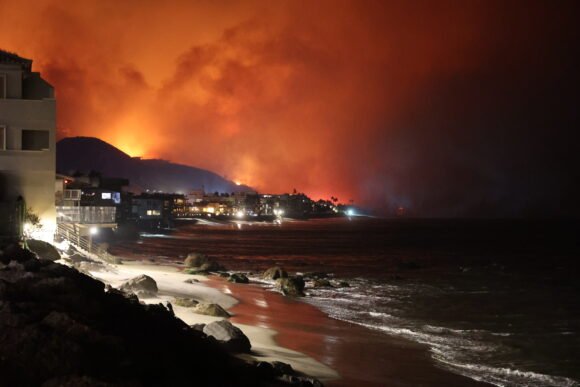
February 19, 2025 | JacobiJournal.com — Los Angeles Wildfires: Farmers Insurance estimates $600 million in losses from the Los Angeles wildfires that swept through the region in January 2024, adding to the growing financial toll on insurers. So far, insurance companies have paid out more than $6.9 billion to policyholders affected by the two most devastating wildfires in the area, according to the California Department of Insurance (CDI). Rising Claims and Widespread Damage As of the latest CDI data, insurers have received: Heavy Losses Across Major Insurers Several large insurers have reported losses exceeding $1 billion, including: Additionally, the California FAIR Plan, the state’s insurer of last resort, has already paid over $914 million in claims. This led to a $1 billion assessment request from the state insurance commissioner to help cover the financial burden. How Farmers Plans to Manage Losses Farmers clarified that its $600 million loss estimate excludes: The Farmers Exchanges, which include Farmers Insurance Exchange, Fire Insurance Exchange, and Truck Insurance Exchange, emphasize that their strong capital reserves and reinsurance strategies will help them navigate the financial impact. In a statement, Farmers reaffirmed its long-standing commitment to Southern California and its policyholders: “With deep roots in Southern California, the Farmers Exchanges remain dedicated to supporting the recovery process for all their customers, employees, and communities impacted by the devastating fires.” The company also reaffirmed plans to expand coverage options in California, despite the ongoing challenges in the state’s insurance market. Economic Toll Could Top $164 Billion Beyond insured losses, the total economic impact of the January wildfires could range between $95 billion and $164 billion, according to a report from UCLA. Read the full California Department of Insurance report here. FAQs: Los Angeles Wildfires How much did Farmers Insurance project in losses from the Los Angeles wildfires? Farmers Insurance projected $600 million in losses from the Los Angeles wildfires, excluding FAIR Plan losses and a $250 million reinstatement premium. How have Los Angeles wildfires impacted the insurance industry overall? According to the California Department of Insurance, insurers have paid out more than $6.9 billion in claims tied to the Los Angeles wildfires, with several major companies reporting over $1 billion in losses. What is the California FAIR Plan’s role in the Los Angeles wildfires? The California FAIR Plan, the state’s insurer of last resort, has already paid out over $914 million in wildfire-related claims and requested a $1 billion assessment to cover costs. What is the estimated total economic impact of the Los Angeles wildfires? A UCLA report estimates that the overall economic toll of the Los Angeles wildfires could range between $95 billion and $164 billion, far exceeding insured losses. Stay informed on wildfire impacts, insurance market challenges, and industry recovery strategies. Subscribe to JacobiJournal.com today for expert coverage and real-time updates on Los Angeles wildfires and other major insurance developments. 🔎 Read More from JacobiJournal.com:
Cal/OSHA Penalizes Plumbing Companies $529K for Trench Collapse Violations

February 18, 2025 | JacobiJournal.com — Cal/OSHA Penalizes Plumbing Companies: The California Division of Occupational Safety and Health (Cal/OSHA) has fined Smelly Mel’s Plumbing and Sewer Rat Plumbing a total of $529,640 for trench safety violations. The penalties follow an August 2024 trench collapse in San Mateo, which severely injured a construction worker. Investigation Reveals Multiple Safety Failures Cal/OSHA Penalizes Plumbing Companies: Cal/OSHA’s investigation found serious violations that put workers at high risk. As a result, inspectors issued eight citations to each company. These plumbing companies were cited for failing to implement the most basic trench safety protocols, which Cal/OSHA considers essential to prevent collapses and protect workers. By neglecting proper inspections, protective systems, and emergency readiness, the plumbing companies exposed employees to hazards that could have resulted in fatalities. Key violations included: Trench Safety Is Critical Trenching accidents can be deadly if safety measures are ignored. To prevent collapses, Cal/OSHA requires protective systems like trench boxes and shoring. Daily inspections are also mandatory to identify potential hazards. “Ignoring these safety requirements puts workers’ lives at risk,” a Cal/OSHA representative stated. “Employers must follow trench safety laws to prevent serious injuries and fatalities.” Stronger Enforcement for Workplace Safety California regulators are increasing safety enforcement to hold employers accountable. This case highlights the severe consequences of workplace negligence. Read the official Cal/OSHA citation details here. FAQs: Cal/OSHA Penalizes Plumbing Companies and Trench Safety Why did Cal/OSHA penalize plumbing companies in this case? Cal/OSHA penalized plumbing companies because they failed to provide proper trench safety measures such as protective systems, safe exits, inspections, and first aid readiness. What violations were found when Cal/OSHA penalized plumbing companies in San Mateo? The violations included lack of competent inspections, no ladder or escape routes, absence of trench shoring or shielding, debris hazards, and failure to notify Cal/OSHA before excavation. How much did Cal/OSHA penalize plumbing companies for trench safety failures? Cal/OSHA penalized plumbing companies a total of $529,640 after the trench collapse, issuing multiple serious citations to both employers involved. What lessons can employers learn from the case where Cal/OSHA penalized plumbing companies? The case highlights the importance of daily inspections, protective trench systems, and safety meetings. Employers who ignore these requirements risk severe penalties and worker injuries. Stay ahead of workplace safety and compliance news. Subscribe to JacobiJournal.com today for weekly updates. 🔎 Read More from JacobiJournal.com:
California Insurance Commissioner Blocks State Farm’s 22% Rate Hike Request
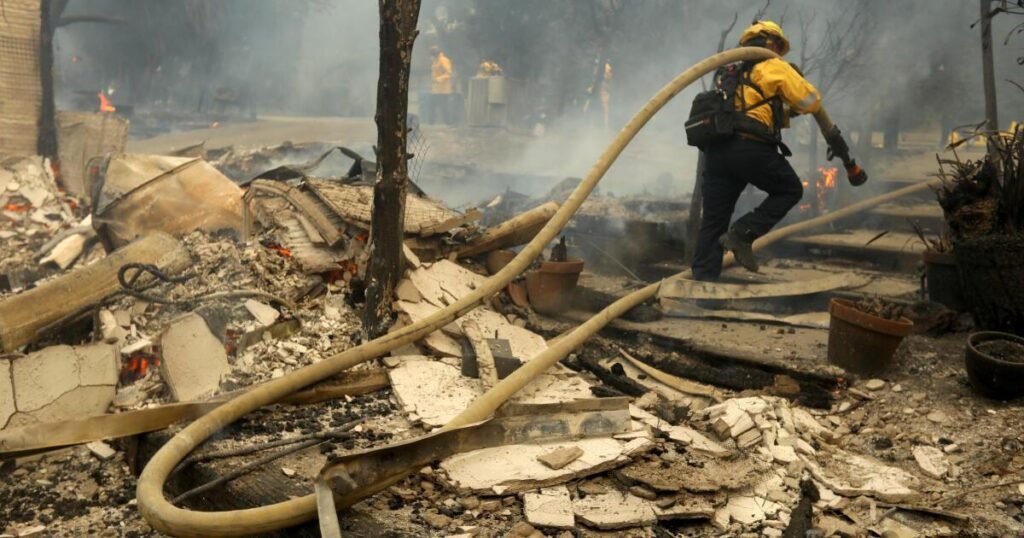
February 17, 2025 | JacobiJournal.com — California Insurance Commissioner Ricardo Lara has denied State Farm’s request for an emergency 22% rate increase, instead calling for an in-person meeting to examine the insurer’s financial standing and the justification behind the proposed rate hike. State Farm, the largest home insurer in California, had requested immediate approval for the increase, citing massive losses from the recent Los Angeles wildfires. As of February 14, the company reported 11,400 home and auto claims, paying out over $1.35 billion in wildfire-related damages. Commissioner Lara: State Farm Didn’t Justify the Request In a letter issued on February 16, Commissioner Lara wrote: “Under the strict review laid out by Proposition 103, the burden is on State Farm to show why this is needed now. State Farm has not met its burden.” Instead of granting approval, Lara scheduled a February 26 meeting with State Farm executives to discuss: State Farm responded with disappointment, stating: “We are very disappointed the Commissioner ignored his department’s recommendation to approve our request for interim rate increases… This decision sends a strong message about the challenges we face in collecting sufficient premiums moving forward.” State Farm’s Ongoing Struggles in California California Insurance Commissioner: Despite multiple approved rate hikes, State Farm halted new policy sales in California in May 2023, citing wildfire risks and regulatory challenges. The company has also non-renewed thousands of policies while warning of further market shifts. State Farm argues that its financial model is unsustainable in the state. According to the company, for every $1 collected in premiums, it has paid out $1.26, resulting in over $5 billion in underwriting losses over the past nine years. The rejected 22% rate increase would have applied to: Wildfire Damage: A Major Factor in Rising Rates Wildfire risks have forced many insurers to rethink their California presence. In the past decade, seven of the state’s ten most destructive wildfires have occurred, leading to escalating insurance claims. The Los Angeles-area wildfires, including the Palisades and Eaton fires, are expected to generate up to $40 billion in insured losses. The California Department of Insurance (CDI) reports that insurers have already paid out over $6.9 billion, with 33,717 claims filed for home, business, and living expenses. What’s Next for State Farm and California’s Insurance Market? State Farm warns that continued financial strain may force further action in California, including reducing coverage offerings. The insurer has also emphasized the need for reinsurance, stating: “State Farm General still insures high concentrations of risk in California that could generate financial losses multiple times larger than its available capital.” Meanwhile, Commissioner Lara has signaled that while he is open to discussions, insurers must comply with Proposition 103’s strict rate review process. With wildfire risks growing, insurers, regulators, and policymakers face urgent challenges in stabilizing California’s home insurance market. Read the full California Department of Insurance statement here. FAQs: State Farm Rate Hike and California Insurance Market Why did California block the recent State Farm rate hike? The Commissioner found State Farm did not justify the emergency request under Proposition 103’s strict review requirements. How would the State Farm rate hike have affected California homeowners? The proposal included a 22% increase for homeowners, 15% for renters and condos, and up to 38% for rental dwellings. What role do wildfire losses play in the State Farm rate hike issue? State Farm cited billions in wildfire-related claims, saying rising risks make its financial model unsustainable in California. What’s next for California’s insurance market after the denied State Farm rate hike? Regulators and insurers will meet to discuss solutions, but more market withdrawals and stricter conditions may follow. Why can’t insurance companies raise rates in California? California’s Proposition 103 requires insurers to undergo a rigorous public review process and prove that any proposed increase is justified. Emergency rate hikes face an even higher burden of proof, limiting insurers’ ability to raise rates quickly. Stay ahead on breaking insurance and regulatory news — subscribe now to JacobiJournal.com for expert insights delivered straight to your inbox. 🔎 Read More from JacobiJournal.com:
California Greenlights FAIR Plan’s $1 Billion Assessment on Insurers for Wildfire Claims
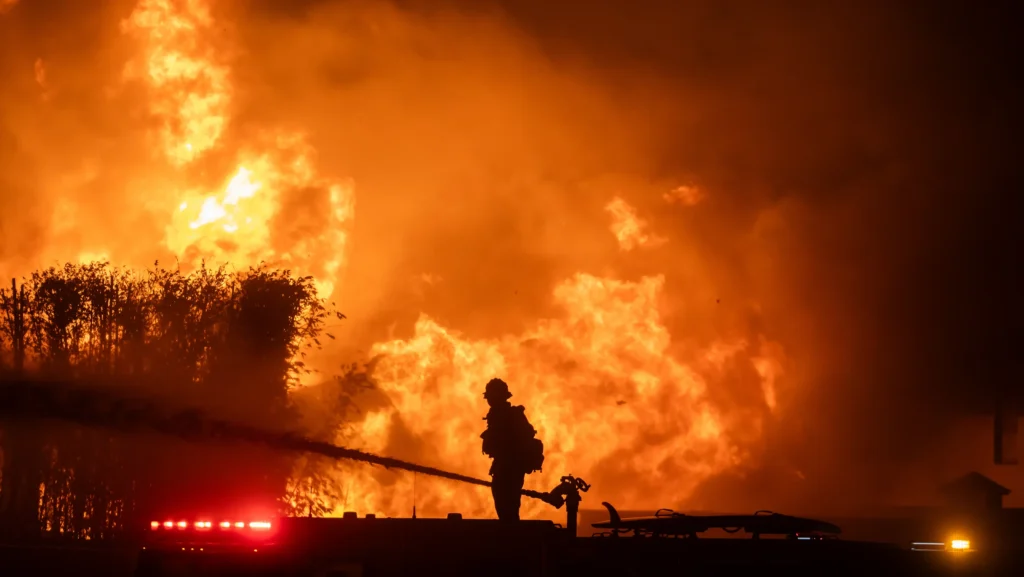
February 14, 2025 | JacobiJournal.com — California Greenlights FAIR Plan’s FAIR Plan assessment: California Insurance Commissioner Ricardo Lara has approved the California FAIR Plan’s request to impose a $1 billion assessment on admitted market insurers to help cover Los Angeles wildfire claims. The FAIR Plan has already paid out over $914 million to policyholders, including advance payments for claims related to the Palisades and Eaton fires. Thousands of Wildfire Claims Filed As of February 11, policyholders have submitted: Losses vary, with 45% of claims classified as total losses, another 45% as partial losses, and 10% involving fair rental value, which covers lost rental income. Major Insurers Facing Billions in Losses Several large insurers are reporting significant financial setbacks. Why the $1 Billion Assessment? The FAIR Plan’s Accounting and Governing Committees recommended the assessment to access additional reinsurance layers and maintain operations. Commissioner Lara noted this is the first assessment of its kind in over 30 years. To help insurers offset the financial burden, Lara announced they can apply to recoup 50% of the assessment, provided their payment is not already reimbursed through reinsurance. The FAIR Plan has already utilized $350 million in reinsurance after meeting its $900 million deductible. It can access up to $5.78 billion in total reinsurance, but it must contribute $3.5 billion—including deductibles and co-pays—before reaching that limit. Industry and Consumer Reactions California Greenlights FAIR Plan’s: The American Property Casualty Insurance Association (APCIA) supports rebuilding the FAIR Plan’s reserves but urges the state to consider additional funding strategies. Mark Sektnan, APCIA’s Vice President for State Government Relations, emphasized: “To ensure long-term stability, California must explore alternative funding solutions—such as catastrophic bonds, credit lines, and other financial instruments—to fairly distribute risk and bolster the FAIR Plan’s resilience.” Meanwhile, Consumer Watchdog strongly opposes the assessment, calling it a “homeowner surcharge to bail out insurers.” Executive Director Carmen Balber criticized the move: “The FAIR Plan is struggling because insurers abandoned too many homeowners. Now, insurance companies are responsible for these losses, and consumers shouldn’t have to pay for the industry’s failures.” Consumer Watchdog is now considering legal action to challenge the assessment. The Road Ahead With wildfire risks increasing, California faces mounting pressure to reform its insurance market. The debate over funding the FAIR Plan highlights the ongoing struggle between insurers, regulators, and consumer advocates—a battle that will shape the future of home insurance in high-risk areas. Read the full California FAIR Plan announcement here. FAQs: FAIR Plan Assessment and Wildfire Insurance What is the purpose of the FAIR Plan assessment in California? The FAIR Plan assessment helps insurers share financial responsibility for wildfire claims, ensuring policyholders receive payouts even after catastrophic losses. How will insurers be affected by the $1 billion FAIR Plan assessment? Insurers must contribute toward wildfire payouts, but they may apply to recover up to 50% of the FAIR Plan assessment if not already reimbursed through reinsurance. Why is the FAIR Plan assessment controversial among consumer advocates? Consumer groups argue the FAIR Plan assessment unfairly shifts financial responsibility onto homeowners and insurers, raising concerns about affordability and fairness. When was the last time California issued a FAIR Plan assessment? According to regulators, this is the first FAIR Plan assessment in over 30 years, highlighting the growing impact of severe wildfire losses on California’s insurance system. What is the assessment of the California FAIR Plan? The assessment is a mandatory charge placed on admitted insurers to help the FAIR Plan cover wildfire-related losses. This year’s $1 billion assessment is tied directly to the surge in claims from recent Los Angeles–area wildfires. Are insurance companies denying claims in California for fires? Most wildfire claims are being paid, but some policyholders do report disputes over coverage limits, documentation, or policy exclusions. Regulators continue monitoring insurers to ensure valid fire claims are handled properly and in compliance with state standards. What is the California FAIR Plan Assessment 2025? The 2025 assessment refers to the $1 billion charge approved by Commissioner Ricardo Lara to stabilize the FAIR Plan after it paid out more than $914 million in wildfire claims. Insurers may apply to recoup up to half of the amount they contribute, depending on reinsurance reimbursements. Stay informed on insurance, workers’ comp, and regulatory updates — subscribe to JacobiJournal.com today. 🔎 Read More from JacobiJournal.com:
Insurers Pay Nearly $7 Billion for LA Wildfire Claims, Report Reveals
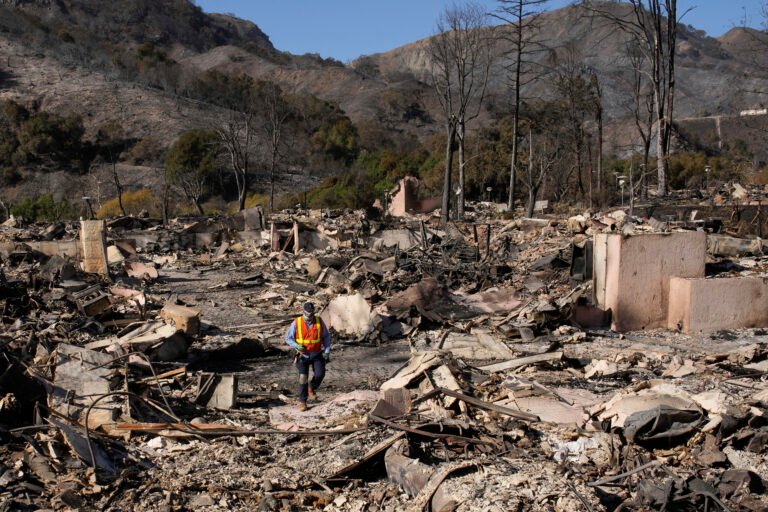
February 14, 2025 | JacobiJournal.com — LA Wildfire Claims: Insurance companies have paid $6.9 billion for damages from two massive Los Angeles-area wildfires that tore through the region last month. The California Department of Insurance (CDI) released updated figures on February 13, reflecting a sharp rise from the $4.2 billion reported on January 30. Thousands of Claims Filed According to CDI, policyholders have submitted 33,717 claims for home, business, and disaster-related expenses. Additionally, 5,597 auto insurance claims total $73 million in payouts. Experts predict insured losses will climb, with estimates ranging between $8 billion and $40 billion. Major Insurers Report Heavy Losses LA Wildfire Claims: Several major carriers face substantial financial impacts. Mercury Insurance Group expects gross losses of $1.6 billion to $2.0 billion. However, subrogation and reinsurance recoveries may lower its final loss to $325 million or less. Travelers Companies Inc. projects $1.7 billion in wildfire losses, while USAA, Chubb, Allstate, and State Farm each report over $1 billion in claims. Meanwhile, the California FAIR Plan, the state’s last-resort insurer, has already paid $914 million to policyholders. It has now requested a $1 billion assessment from admitted market insurers to cover the claims. Total Economic Damage Could Reach $164 Billion Beyond insured losses, the total economic impact of the January wildfires is estimated between $95 billion and $164 billion, according to a UCLA report. The financial burden adds pressure to California’s struggling insurance market, which is already facing rising premiums and policy cancellations in wildfire-prone areas. Read the California Department of Insurance’s full report here. FAQs: LA Wildfire Claims and Insurance Impacts How much have insurers paid so far for LA Wildfire Claims? Insurers have paid $6.9 billion for LA Wildfire Claims, and payouts are expected to rise as more claims are processed.Which companies reported the largest losses from LA Wildfire Claims? Major carriers like State Farm, Allstate, Travelers, and Mercury Insurance have reported more than $1 billion each from LA Wildfire Claims.What role does the California FAIR Plan play in LA Wildfire Claims? The FAIR Plan has already paid $914 million for LA Wildfire Claims and requested a $1 billion assessment from insurers to maintain reserves.How could LA Wildfire Claims affect California’s insurance market? The surge in LA Wildfire Claims may lead to higher premiums, stricter underwriting, and policy non-renewals in high-risk wildfire zones. Are California wildfires covered by insurance? In general, wildfire damage is covered under standard homeowners and business insurance policies in California. However, coverage can vary depending on the policy type, exclusions, and whether the property is in a designated high-risk zone. How much will the LA wildfire insurance estimate? Current insured-loss estimates range widely. Regulators project at least $8 billion in covered losses, while some analysts believe the final number could climb toward $40 billion as additional claims develop. Are insurance companies denying claims in California wildfires? Some policyholders may face disputes or delays, especially in high-risk areas where documentation is difficult or coverage limits are unclear. Regulators continue monitoring insurer practices to ensure legitimate wildfire claims are paid. Will insurance pay out for LA wildfires? Most homeowners and commercial policies do cover wildfire damage, so insurers are paying out claims tied to the LA wildfires. Payouts have already reached $6.9 billion, and totals are expected to rise as additional claims move through the system. Stay ahead on wildfire insurance news, regulatory actions, and market shifts — subscribe now at JacobiJournal.com. 🔎 Read More from JacobiJournal.com:
California Food Distributor Pays $949,000 to Resolve Small-Business Contract Dispute
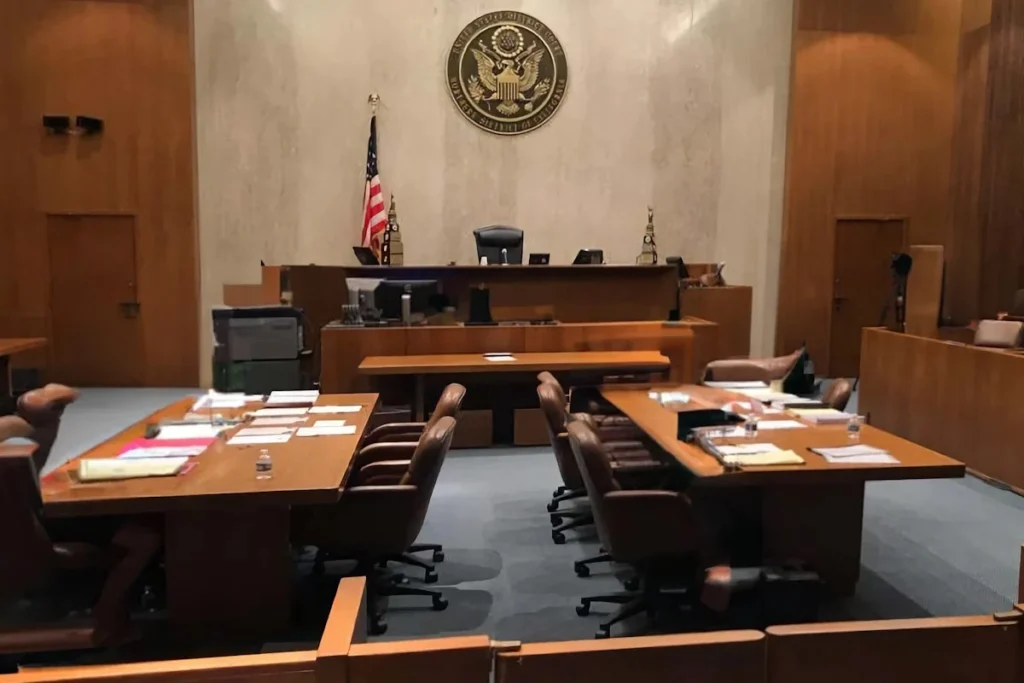
February 5, 2025 | JacobiJournal.com — Contract fraud case: GS Foods Group Inc., based in Ontario, California, has agreed to pay $949,000 to settle allegations of contract violations under the False Claims Act. The company was accused of improperly obtaining federal contracts reserved for small businesses, despite not meeting eligibility requirements, a case viewed by officials as a form of contract fraud within federal procurement. Federal investigators noted that cases of contract fraud undermine the integrity of government programs designed to give small businesses fair opportunities. When larger companies misrepresent their eligibility, it not only violates federal rules but also deprives smaller, qualified businesses of critical growth opportunities. Regulators stress that maintaining transparency in federal contracting is essential to protecting both taxpayer dollars and the competitive marketplace. Allegations and Contract Violations California Food Distributor: Authorities alleged that GS Foods and its subsidiaries, GoodSource Solutions Inc. and Dori Foods Inc., misrepresented their qualifications. Between October 1, 2018, and March 8, 2024, the companies secured contracts intended for small businesses. These contracts involved supplying food to facilities operated by the Federal Bureau of Prisons and U.S. Immigration and Customs Enforcement (ICE). Since GS Foods had affiliations with larger companies, it did not meet the criteria to bid on these contracts. Company Response and Compliance Measures GS Foods self-reported the issue to the Department of Justice’s Office of Inspector General (DOJ-OIG) and cooperated with the investigation. To address the concerns, the company took corrective actions, including: These steps aim to prevent future violations and ensure compliance with federal regulations. By strengthening internal controls and creating a culture of accountability, GS Foods is signaling to regulators and business partners that it takes ethical standards seriously. Compliance officers and training programs are particularly important in preventing contract fraud, as they help employees recognize red flags, understand eligibility requirements, and follow proper reporting channels. Such proactive measures not only reduce legal risk but also rebuild trust with federal agencies and smaller competitors who depend on fair contracting opportunities. Settlement Details and Legal Implications The settlement resulted from a coordinated effort between the Justice Department’s Civil Division and DOJ-OIG’s Fraud Detection Office. While GS Foods agreed to pay the fine, no determination of liability was made. Contract fraud remains a significant issue, affecting small businesses that rely on fair access to government opportunities. This case highlights the importance of transparency in federal contracting. For policymakers and small business advocates, cases like this underscore the ongoing need for stronger oversight in procurement. Agencies continue to explore enhanced monitoring systems and stricter eligibility checks to deter fraudulent bids. For small business owners, staying informed about contract regulations can also help ensure compliance and reduce the risk of disputes with federal agencies. Read the full report from the U.S. Department of Justice. FAQs: Contract Fraud in Federal Small-Business Programs What is contract fraud in federal small-business programs? It occurs when a company misrepresents its size or qualifications to secure contracts intended only for small businesses. How was contract fraud discovered in the GS Foods case? Authorities learned the company and its subsidiaries had ties to larger firms, making them ineligible for small-business federal contracts. What compliance measures can reduce the risk of contract fraud? Steps include employee training, stronger ethics policies, oversight committees, and regular audits of contract eligibility. Why is contract fraud harmful to small businesses? It unfairly limits opportunities for legitimate small businesses, preventing them from competing fairly for federal contracts. How do I get my money back from a contractor in California? If a contractor violates the terms of a contract, you can seek repayment through legal action or alternative dispute resolution. Courts may award damages or restitution depending on the contract terms and evidence of the breach, similar to how federal authorities recovered funds in GS Foods’ settlement. Stay informed on corporate compliance, business settlements, and fraud cases. Subscribe to JacobiJournal.com for trusted updates. 🔎 Read More from JacobiJournal.com:
Cyber Insurance Market Poised for Growth Amid Evolving Threats: Gallagher Report

January 20, 2025 | JacobiJournal.com — Cyber Insurance: As cyber risks evolve, the insurance market is set to expand, with stable rates and ample capacity expected in 2025. A recent Gallagher report highlights increasing competition among insurance carriers, resulting in higher policy limits, enhanced risk management services, and more flexible insurance applications. Market Growth and Projections Gallagher’s 2025 Cyber Insurance Market Conditions Outlook reveals significant growth in the global cyber insurance market. Premiums have more than doubled over five years, reaching $14 billion in 2023, with projections of $29 billion by 2027. John Farley, managing director of cyber at Gallagher, noted, “While we have reached a period of relative calm, the market faces storm clouds around current and emerging claims concerns.” Emerging Cyber Threats Cyber insurers are now focusing on new threats such as ransomware, social engineering losses, and attacks on supply chain providers. They are also preparing for losses from wrongful data collection and potential risks tied to generative artificial intelligence (AI). In 2024, data breach costs soared to an average of $4.9 million—a 10% increase from the previous year. Investment fraud, particularly involving cryptocurrency, surged, with losses climbing from $3.31 billion in 2022 to $4.57 billion in 2023. Cyber Insurance Adapts The dynamic cyber threat landscape demands innovative responses from insurers. They are developing new policy language and strategies to address supply chain, regulatory, wrongful data collection, and AI-related risks. Reinsurance continues to play a crucial role, offering new capacity and support through capital markets, insurance-linked securities, and catastrophe bonds. Despite these evolving threats, the cyber insurance market is expected to expand steadily in 2025, with the industry refining its strategies to mitigate risks effectively. For the original report, see Gallagher’s 2025 Cyber Insurance Market Conditions Outlook. FAQs: Cyber Insurance Market Outlook 2025 What is driving growth in cyber insurance in 2025? Cyber insurance is growing due to higher cybercrime costs, especially from ransomware, supply chain attacks, and AI-related risks. Premiums are projected to reach $29 billion by 2027. How are insurers adapting to new cyber risk challenges? Carriers are updating policies, boosting reinsurance, and offering stronger risk management services to address breaches, phishing, and wrongful data collection claims. What role does reinsurance play in cyber insurance coverage? Reinsurance provides capacity and stability for insurers, using insurance-linked securities and catastrophe bonds to manage large-scale cyber events. Why should businesses monitor cyber insurance trends? Following market trends helps organizations anticipate rising costs, strengthen coverage, and reduce financial exposure to digital threats. What is the trend in cyber security 2025? In 2025, cyber security is increasingly focused on emerging threats such as ransomware, AI-related vulnerabilities, and supply chain attacks. Companies are investing in stronger defenses, while insurers are offering policies that include risk management services to address these evolving challenges. Is cyber security in demand in 2025? Yes. The demand for cyber security expertise and coverage is rising due to growing cybercrime costs and sophisticated attacks. Businesses are seeking both technical protections and insurance solutions to mitigate potential financial losses from data breaches, phishing, and other digital threats. What is the scope of cyber security in 2025? The scope of cyber security extends beyond traditional IT protection. It now includes cloud security, AI-related risk management, regulatory compliance, and coverage for financial losses from cyber incidents. Insurers are expanding policy limits and offering tailored solutions for diverse business sectors. What is the future of cyber insurance? Cyber insurance is projected to grow steadily, with global premiums expected to reach $29 billion by 2027. The market will continue to adapt to new threats, offering flexible coverage, enhanced risk management services, and innovative solutions for businesses facing digital risks. Stay ahead of evolving cyber threats and insurance trends. Subscribe now to JacobiJournal.com for expert analysis, regulatory updates, and in-depth coverage. 🔎 Read More from JacobiJournal.com: